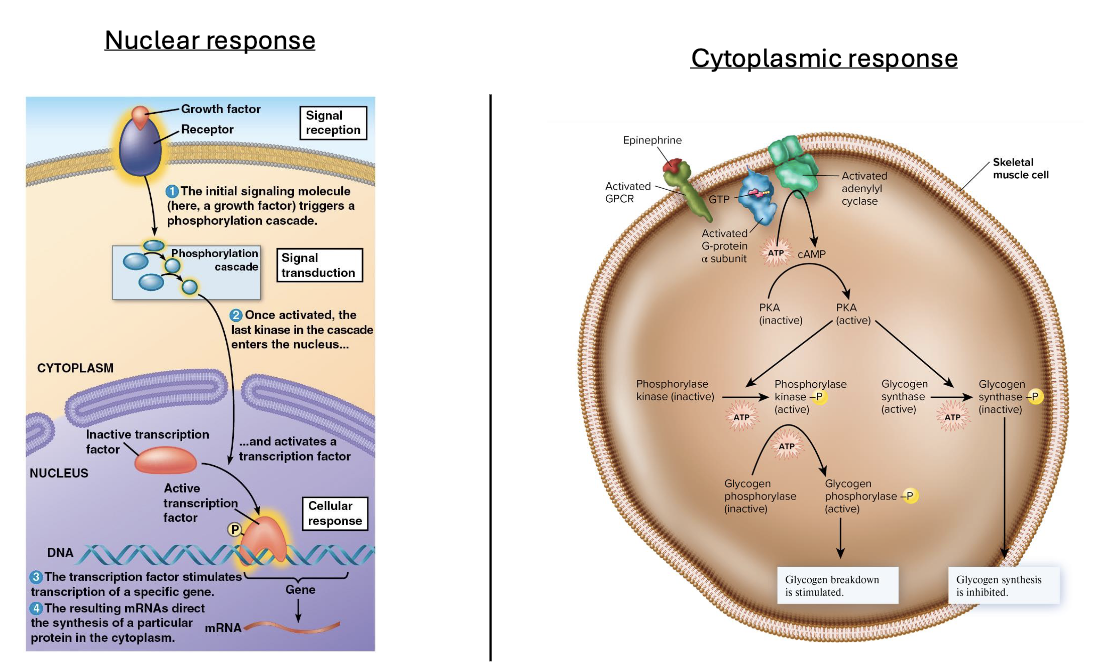Bio 1A- Systems (i currently have a C-)
1/39
There's no tags or description
Looks like no tags are added yet.
Name | Mastery | Learn | Test | Matching | Spaced |
|---|
No study sessions yet.
40 Terms
physiological structural organization
correlation between STRUCTURE and FUNCTION

necessary functions of life
MRS. NERG
movement, respiration, sensitivity (to the environment), nutrition, excretion, reproduction, growth
7 requirements for life
maintain boundaries
movement
responsiveness
digestion
metabolism
excretion
reproduction
growth
maintains boundaries
integumentary systems
skin and such cover external body to protect from injury
movement
skeletal/muscular systems
support body organs, allows locomotion
responsiveness
nervous system: fast acting control to respond to changes
endocrine system: slow acting control to secrete hormones to regulate growth/reproduction/nutrient use
metabolism
respiratory system: keeps blood supplied w oxygen and removes CO2
cardiovascular system: transportts blood
digestion and excretion
digestion
digestive system: breaks down food
excretion
urinary system: eliminates nitrogenous waste from body
reproduction
reproductive systems: function to produce offspring
homeostasis
maintenance of stable internal environment despite changes in external environment
homeostatic system components
1- set point: physiological value or range around which the system fluctuates
2- receptor: mechanism to detect when conditions deviate from the set point
3- control center: structure that both interprets input from receptor and initiates effector change
4- structure that brings change to alter stimulus
negative feedback loop
response moves variable OPPOSITE from initial stimulus
variable fluctuates back toward set point (ex: body temp)
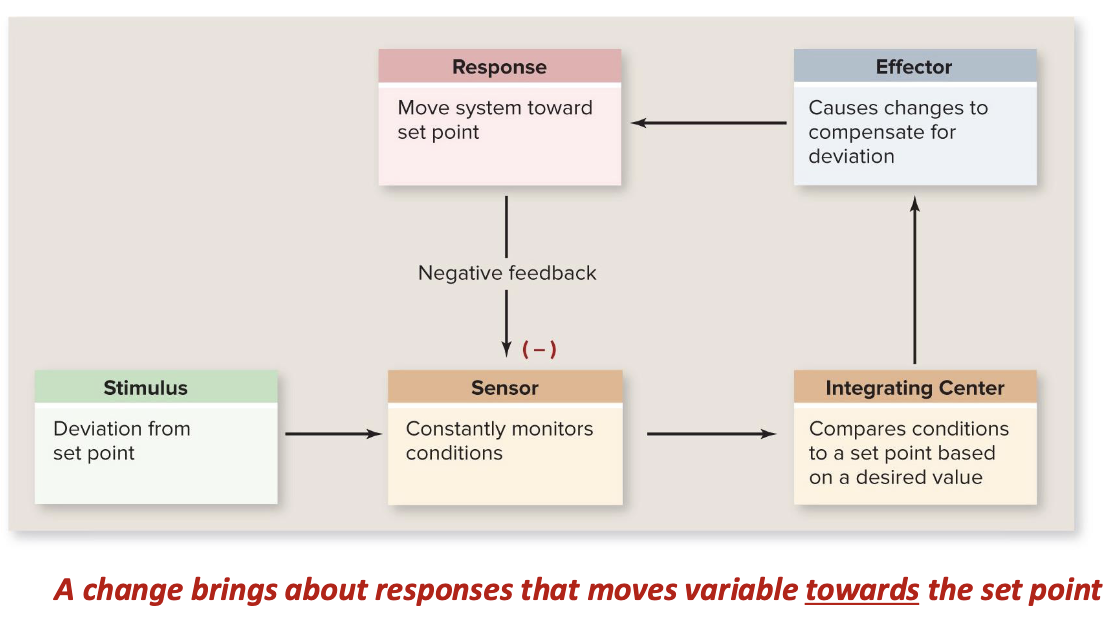
positive feedback loop
response move variable in SAME DIRECTION as initial stimulus
stimulus is reinforced until a climactic event is reached, then the body returns to homeostasis (ex: childbirth)
hint: if the system includes the brain, its likely positive
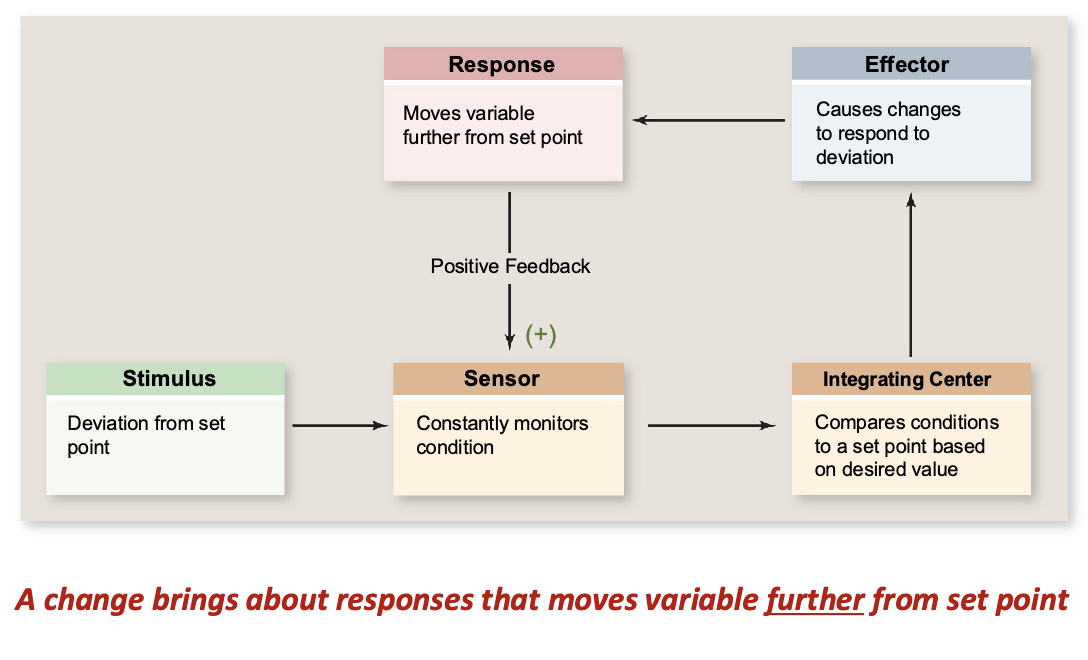
levels of organization in the human body
atom —> molecule —> macromolecule —> cell —> tissue —> organ —> organ system —> organism
core concepts of physiology
homeostasis, structure/function, interdependency of cells, gradients/permeability, cell membrane, levels of organization, systems integration
signals used in feedback loop
ligands (signaling molecules) + receptor on cell
ligand
a molecule that binds to uaually a larger molecule (receptor)
receptor
chemical structure made of protein that receive and transduce signals
cell signaling/communication steps
signal reception: chemical signal detected when ligand binds to receptor
signal transduction: receptor protein conformational change initiates signal transduction within the cell
cell response: transduced signal is converted to a response
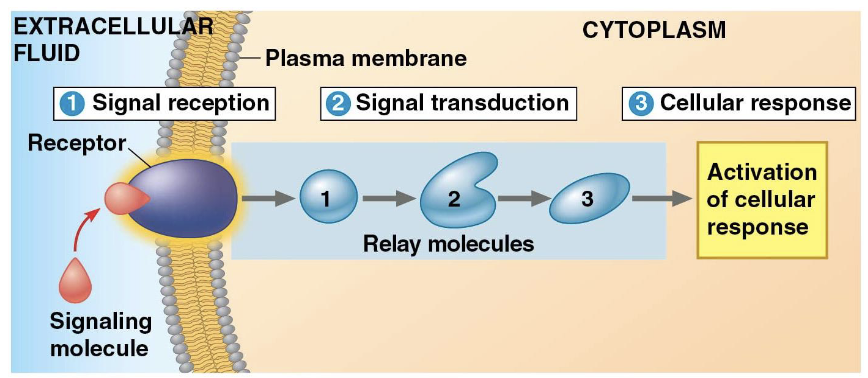
different types of signaling
direct, synaptic, paracrine, endocrine
direct contact cell signaling
molecules on plasma membrane of one cell recognized by receptors on plasma membrane of neighboring cell
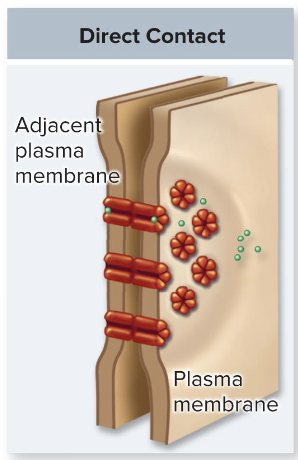
synaptic cell signaling
neurotransmitters released from neuron travels across synapse to neighboring neuron
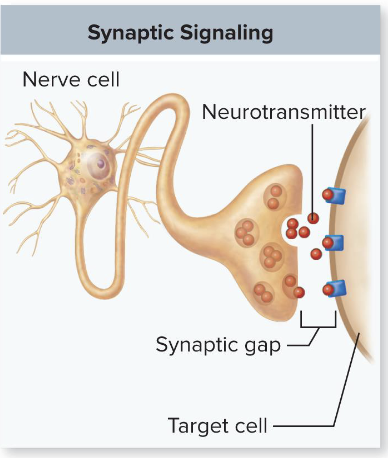
paracrine cell signaling
specific cell secretes signaling molecules which affect nearby cells
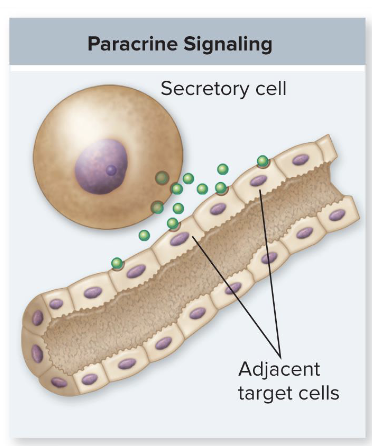
endocrine signaline
hormones travel via the circulatory (blood) system to affect distant target cells (Ex: insulin production from pancreas)
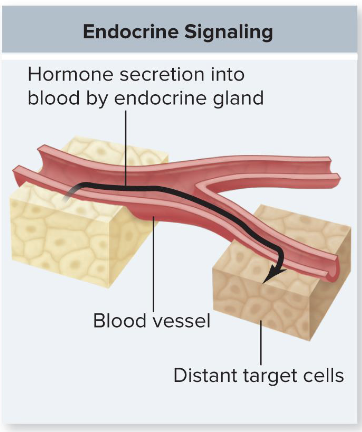
membrane receptor types
cell surface receptors (GPCR, Channel linked, enzyme linked)
intracellular receptors
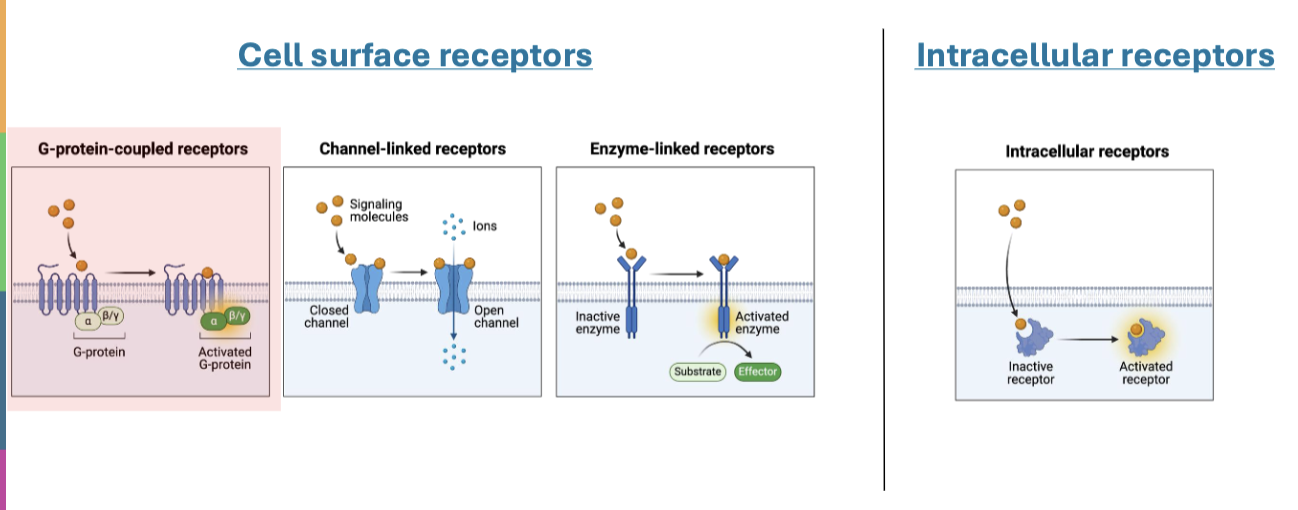
GPCR (G protein coupled receptors)
include 7 transmembrane domains
rely on G proteins
when ligands bind to GPCR, it activates G protein
activated G protein leads to cellular response (ex: taste signal transduction)
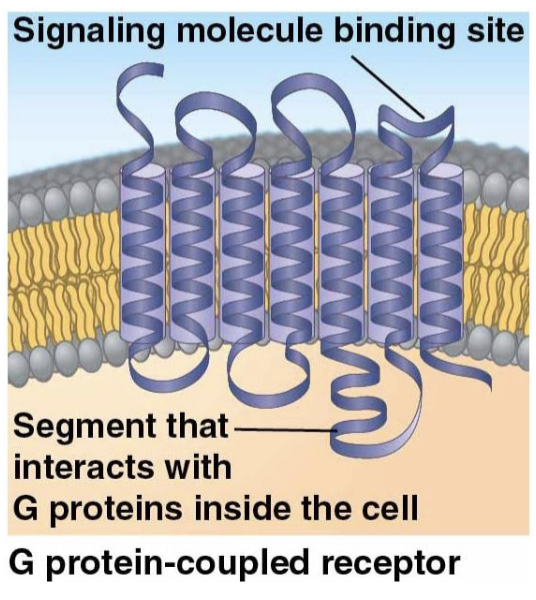
G protein
“active” when bound to GTP; “inactive” when bound to GDP
composed of ɑβ𝛾 subunits
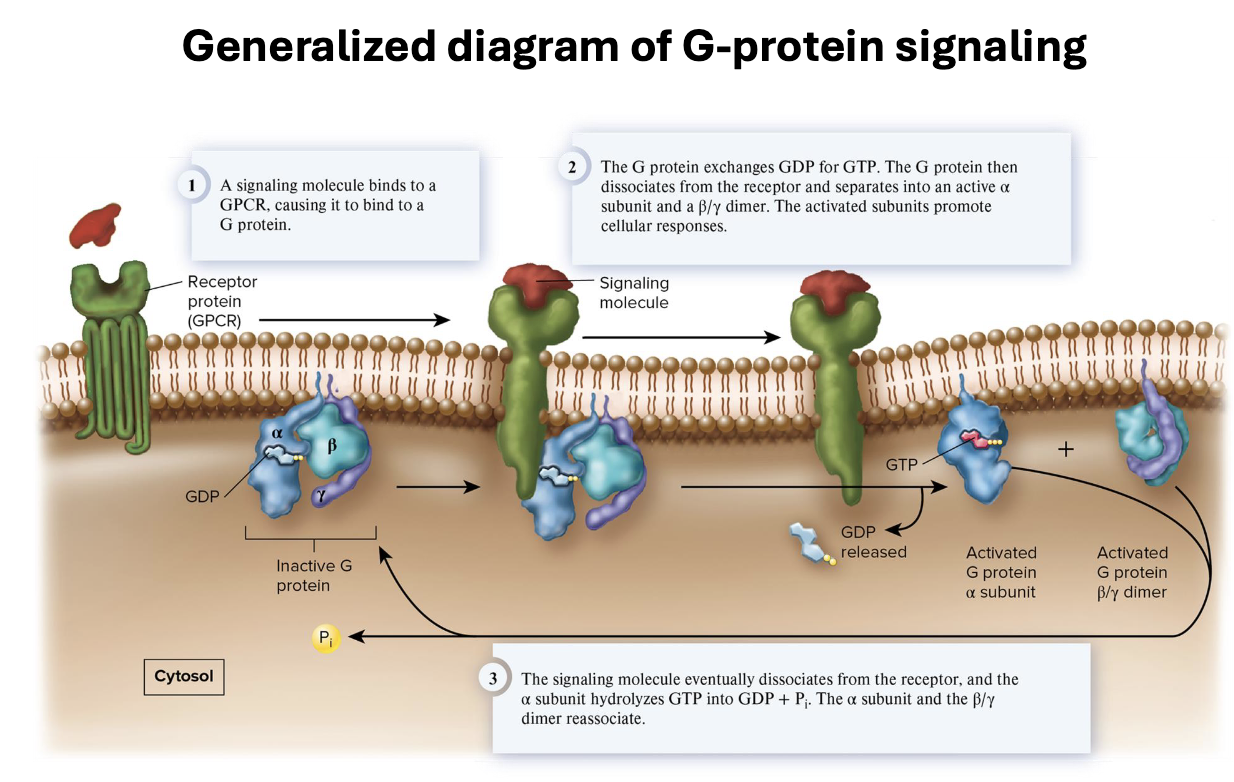
channel linked receptor
ligand binds to channel, allowing it to open for ions to pass through membrane
Ex: nervous system neurotransmitter
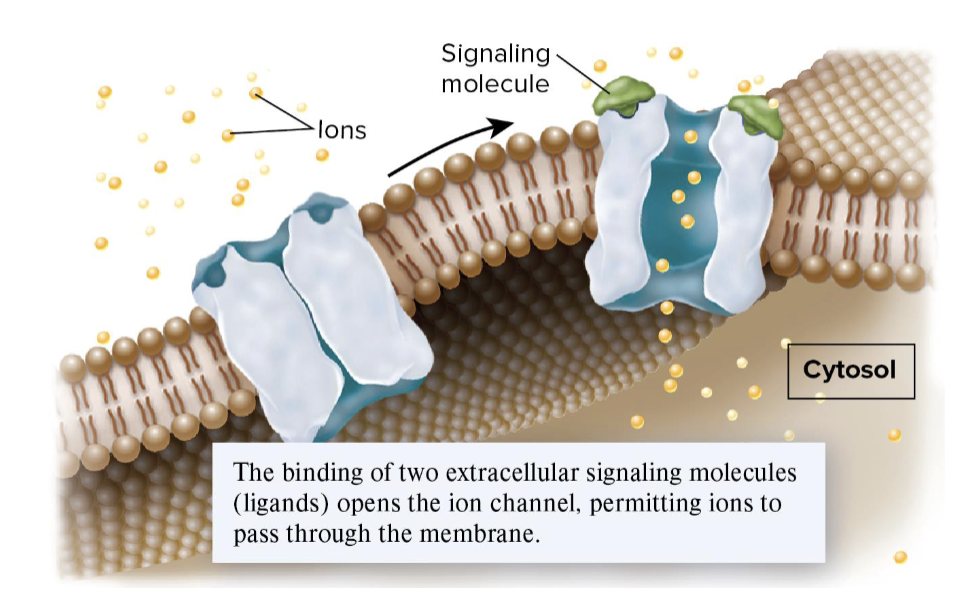
Enzyme linked receptors
ligand binds to the protein which is situated in the bilayer
protein morphs to have enzymatic function inside cell
Ex: insulin receptor phosphorylates the insulin response protein
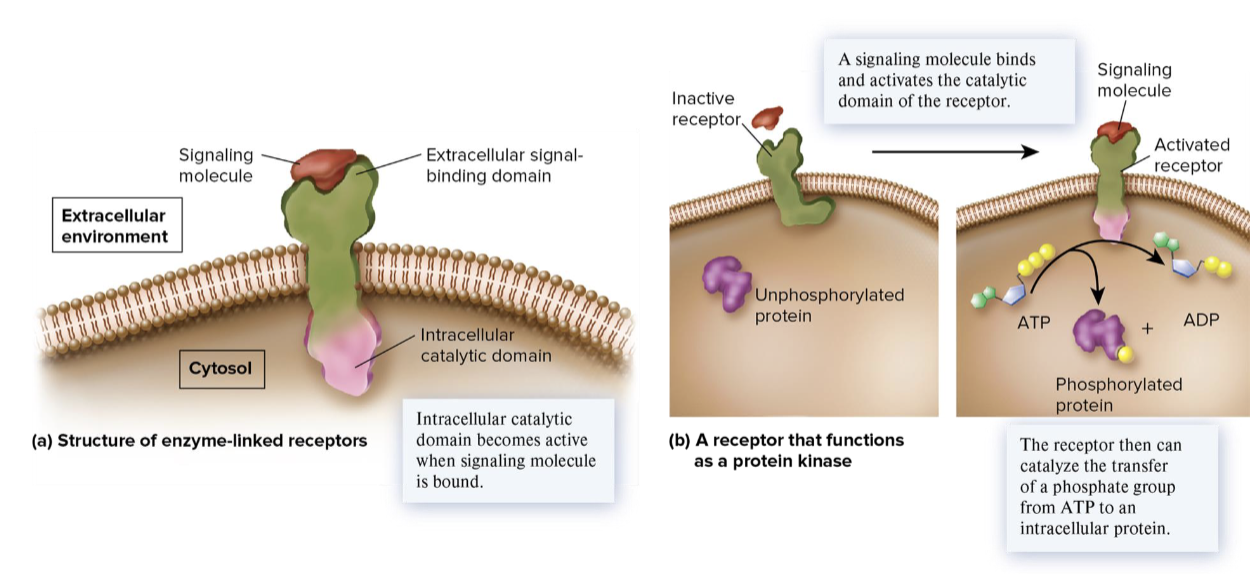
intracellular receptors
ligands (hormones) cross plasma membrane to bind to receptor
receptor protein no longer binds to inhibitor
hormone-receptor protein moves to nucleus where it binds to DNA, turning transcription on/off
Ex: estrogen receptor in mammalian cells
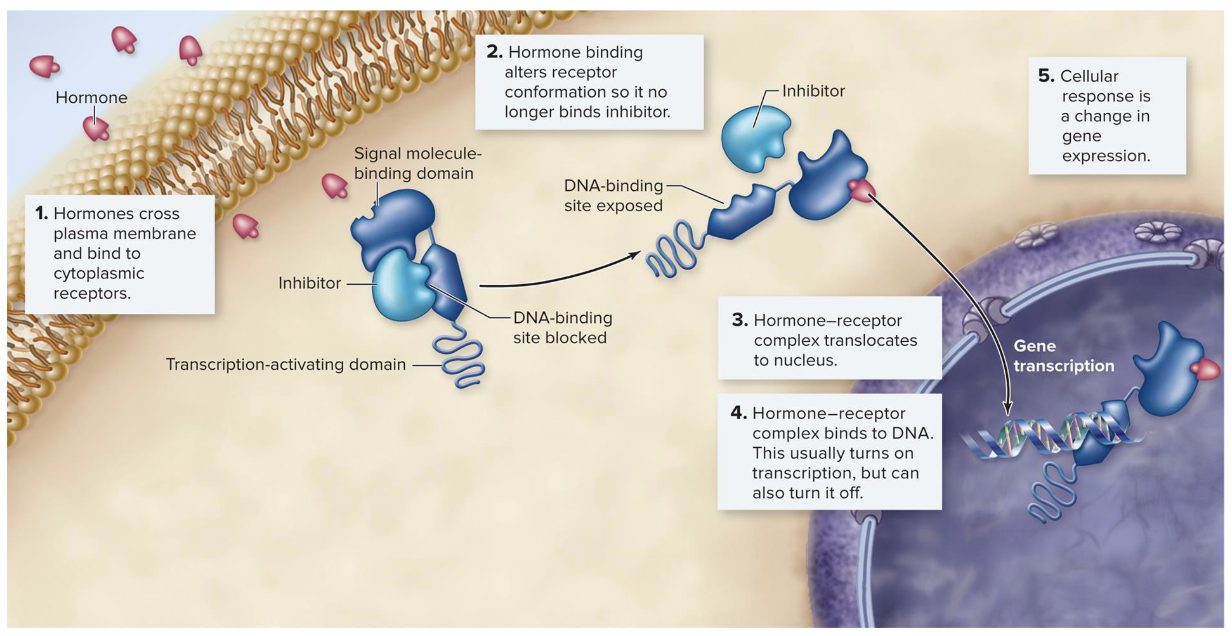
protein kinases
phosphorylate proteins from the phosphate groups of ATP; categorized by the amino acids they modify

phosphatases
remove phosphate groups from proteins for the kinase to do its thing
signal transduction pathway
use phosphorylation/dephosphorylation to control activities
phosphorylation cascade (relay proteins/protein kinases)
multiplies a tiny signal into something much larger
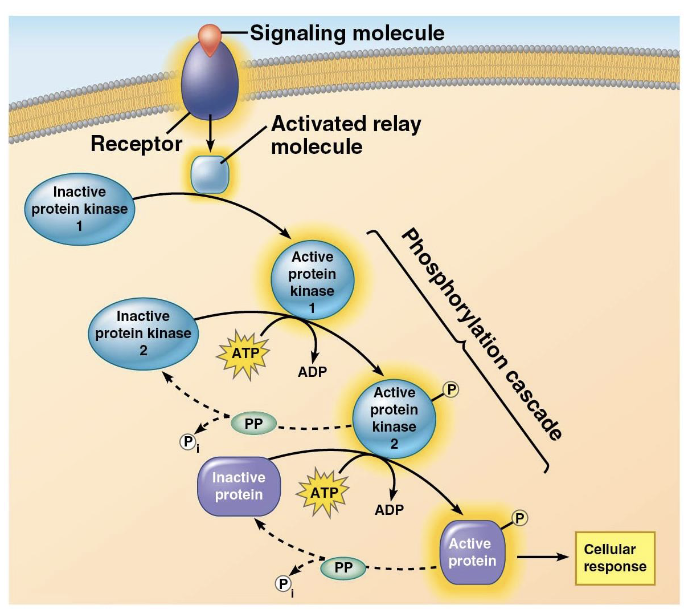
second messengers
small molecules and ions which relay signals recieved by cell surface receptors to effector proteins
participate in pathway initiations by B protein-coupled receptors
Ex: cyclic AMP and calcium ions are common second messangers
Ca² as a second messenger
binds to Calmodulin (cytoplasmic protein)

GPCR second messangers
cAMP, IP, Ca
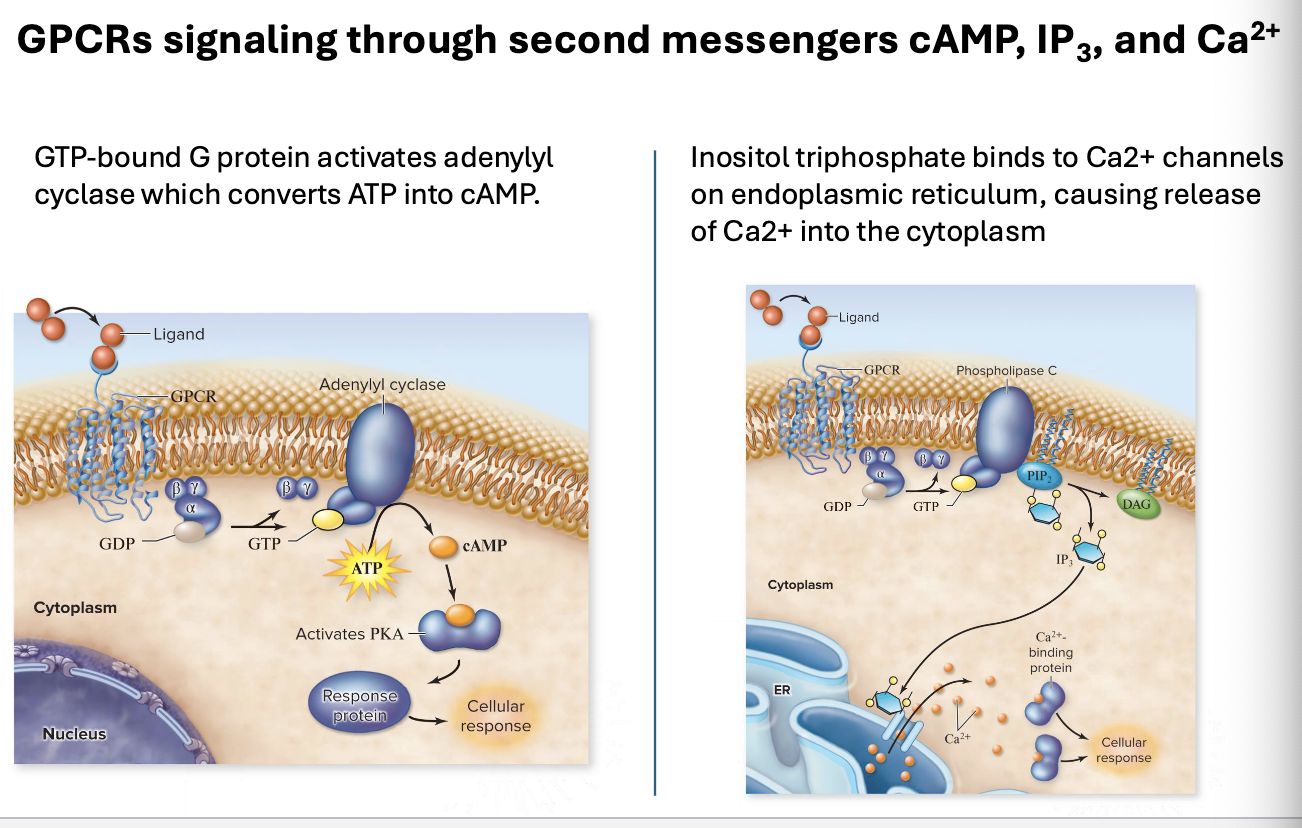
Receptor Tyrosine kinases (RTKs)
type of enzyme receptor
ex: insulin receptor
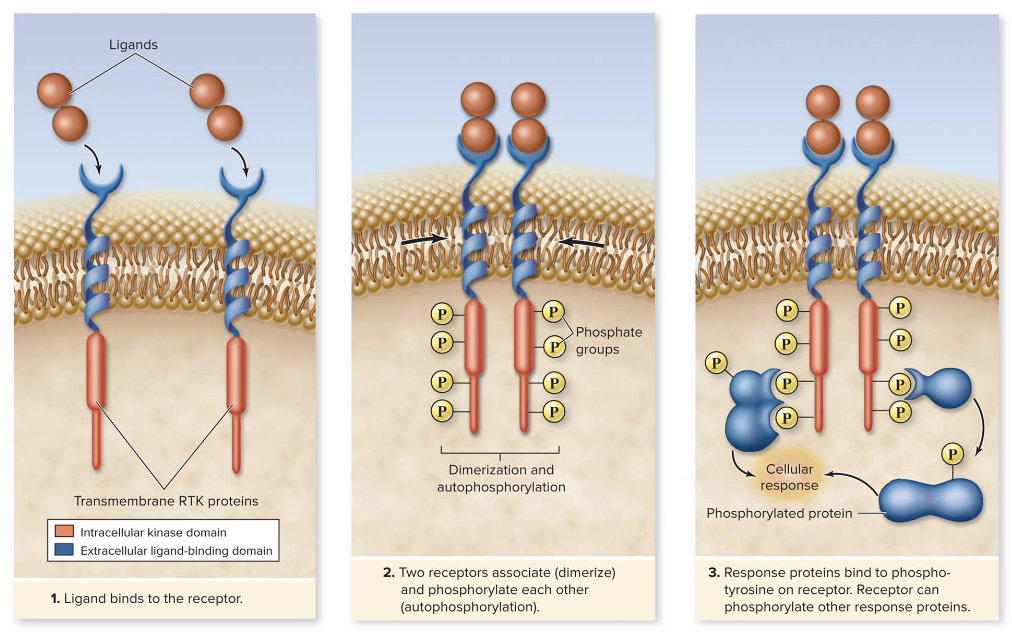
cellular responses to signals
transcription or cytoplasmic activities
